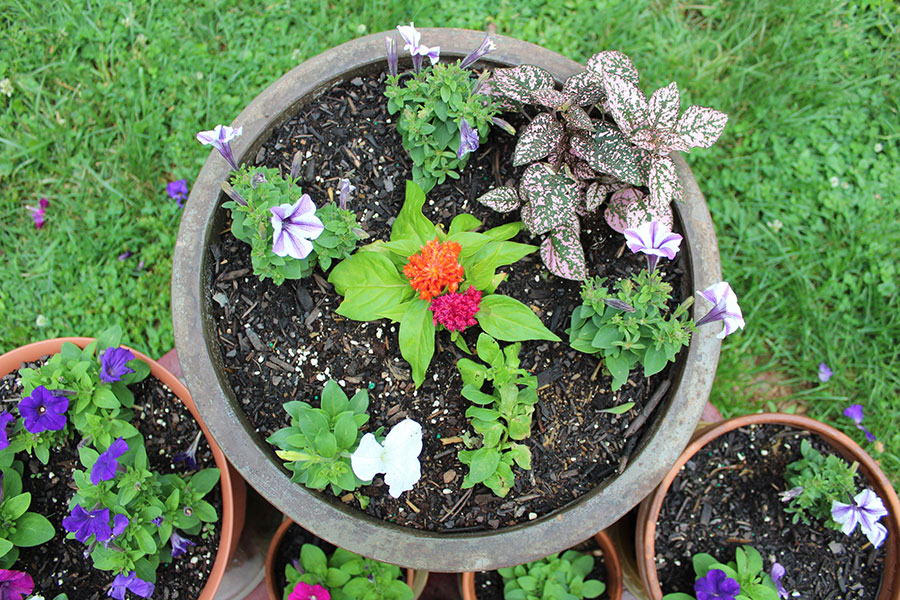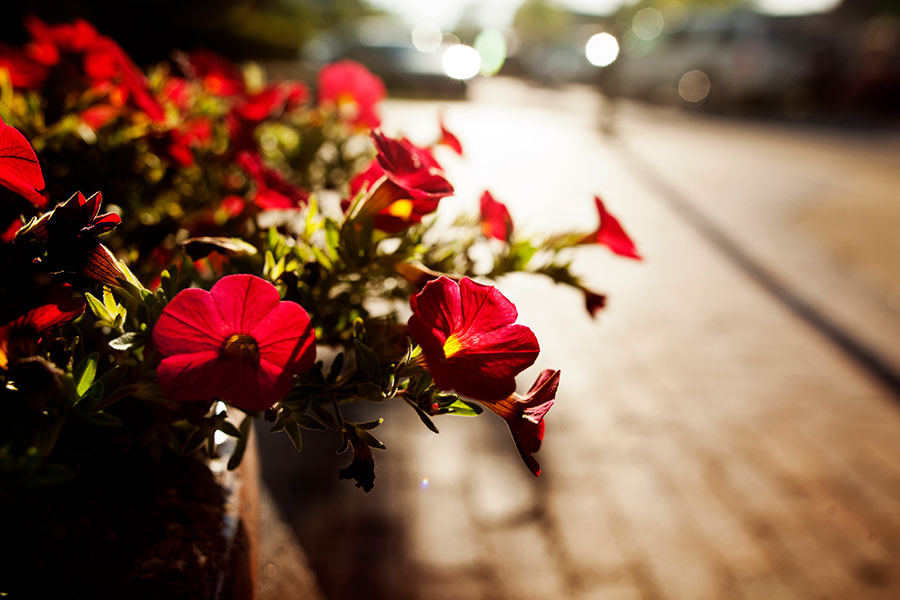Judgement, know-how and diligence make the difference
Dan Tavenier has a rule of thumb for watering that makes perfect sense, despite being somewhat cryptic. “Water as much as necessary and as little as possible,” says the NAIT grounds supervisor.
That is, the rule is a sliding one, particularly when dealing with containers that help bring colour and greenery to the otherwise barren surfaces of our patios, decks and apartment and condo balconies. How much to water depends on the plant, time of year and a variety of other factors. “It requires a great deal of judgement and know-how,” says Tavenier.
Diligence and commitment are part of that mix, too. Without access to natural soil moisture, flowers and vegetables in raised boxes, pots or baskets are heavily dependent upon the gardner. Here, Tavenier helps take some mystery out of striking the balance between too much water and not enough, given the conditions of the day.
 1. Baby new plants – Anything newly planted in a container will not need a great deal of water at first, says Tavenier. Let the top inch of soil dry between waterings, which should happen once every few days, depending on the weather. Don’t let seedlings go dry, but don’t overdo it either. “A lot of material is damaged by overwatering.”
1. Baby new plants – Anything newly planted in a container will not need a great deal of water at first, says Tavenier. Let the top inch of soil dry between waterings, which should happen once every few days, depending on the weather. Don’t let seedlings go dry, but don’t overdo it either. “A lot of material is damaged by overwatering.”
2. Don’t neglect older plants – As foliage grows, plants can become “root bound,” a state in which roots have grown so much that the soil volume becomes inadequate to support them. On some days, such containers may need water as often as twice a day. Be sure to cover the entire surface of the soil, not just the side of the container nearest to you.

To mulch or not to mulch?
“It’s often mentioned that a thin layer of mulch material over the top of the soil will minimize evaporative losses,” says Tavenier. He finds that it does not make much of a difference. “By the time the pots are grown in, the foliage will shade the soil surface sufficiently to have much the same effect.”
3. Water in the morning – Early-day watering is more efficient watering. When temperatures are cooler, “less is lost to evaporation,” says Tavenier.
4. Be direct – Plants don’t like showers. “Get a good wand or a good watering can,” says Tavenier, and direct the water to the soil. Keep moisture off leaves to decrease to possibility of diseases that affect the foliage.
5. Water until it drains – Tavenier knows he’s done the job right when he sees water coming out of the bottom of the container. If it’s sitting in a tray, he lets the plant continue to soak up moisture for about an hour, then removes the excess water.

6. Adapt – The next day (if not later that afternoon, depending), be prepared to do it all again, though perhaps not exactly the same way. Keeping plants happy isn’t hard; it just takes a moment of assessing it and its environment. “Water needs of a plant change over time,” says Tavenier.
The fine art of fertilizer
High-quality potting soils often contain enough fertilizer to get plants rooted, says Tavenier, and plants “won’t require further ‘feeding’ until later in the growing season.” You can also add slow-release fertilizer to the mix yourself.
To supplement in the summer, try liquid or water soluble products, with nutrient ratings of 20-20-20 or 15-30-15. Because regular watering can wash away soil nutrients, “Many growers, me included, prefer to include a very dilute fertilizer solution in every second watering or so,” says Tavenier.